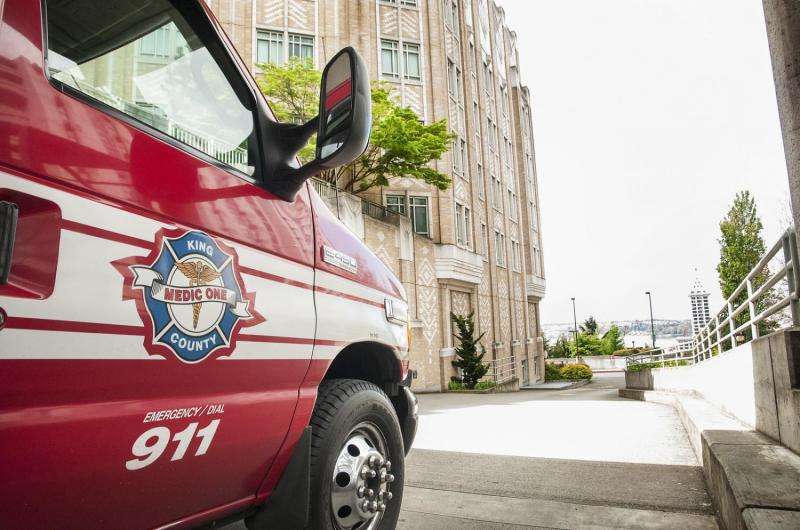CPR by medics: Keep pumping or stop for rescue breathing?

Continuous chest compressions during out-of-hospital CPR by emergency medical responders did not offer survival advantages, when compared to interrupting manual chest pumping to perform rescue breathing. Nor were continuous chest compressions better in protecting brain function among those who survived the cardiac arrest and were later discharged from a hospital.
These unexpected findings come from the largest study so far of emergency medical services responses at the scene of adult cardiac arrests not caused by trauma.
The project leader is Dr. Graham Nichol, University of Washington professor of medicine, director of the UW Medicine Center for Prehospital Emergency Care, and holder of the Leonard A. Cobb Medic One Foundation Endowed Chair in Prehospital Emergency Care. Dr. Joe Ornato of the Virginia Commonwealth University Health System was the senior investigator.
CPR, short for cardiopulmonary resuscitation, is the effort to restore a pulse and respiration in people whose heartbeat and breathing have suddenly ceased.
"The results of this study may well change emergency medical services CPR practice," Nichol said, "Both groups did well. But it appears that patients treated by EMS providers who interrupted chest compressions to deliver rescue breathing using a bag mask appear to survive a bit more often."
The research is also the largest randomized trial ever conducted in patients with cardiac arrest. It found that those patients with out-of-hospital cardiac arrest who received continuous compressions were less likely to survive long enough to be transported or admitted to a hospital. They also had fewer days alive and out of hospital during the first month after their cardiac arrest.
The results were published Monday, Nov. 9, in the New England Journal of Medicine and were accompanied by an editorial by Rudolph W. Koster of Academic Medical Center Amsterdam.
The findings were also presented that afternoon at the American Heart Association Scientific Sessions 2015 in Orlando, Florida. The paper is titled, "Trial of Continuous or Interrupted Chest Compression during CPR." From earlier studies, emergency medical services staff and researchers were concerned that CPR methods that alternate chest pumps with a few lung inflations might reduce blood flow and possible survival.
The CPR researchers wanted to determine if continuous chest compressions at about 100 per minute, accompanied by manual ventilations at about 10 per minute, provided better results than did an approach that repeats the pattern: 30 chest pumps, halt to give two ventilations, resume pumping. Each group received rescue breaths through a bag valve mask. The mask is placed over the patient's nose and mouth and is squeezed to push air into the patient's lungs.
The research involved 114 emergency medical services agencies across the United States and Canada. Most of the locations were urban, but some were suburban and a few were rural.
The cluster-randomized crossover trial included 23,711 out-of-hospital adult cardiac arrest patients, with 12,653 in the intervention group receiving continuous chest compressions, and 11,058 in the control group receiving interrupted chest compressions. Of these, 1,129 patients, or 9 percent of those in the intervention group, and 1,072 patients, or 9.7 percent of those in the control group, survived and were discharged from hospitals.
The researchers also wanted to know what percentage of the control and intervention groups not only survived, but also did not suffer from serious brain damage. Patients received a Rankin scale score of their functional status before they left the hospital. The discharged patients with favorable neurological function scores made up 7.7 percent of the control group and 7 percent of the intervention group.
Nichol emphasized that this particular study evaluated CPR by emergency medical services providers at the scene and during transport to the hospital, not bystander CPR. Bystanders assisting at the scene of a cardiac arrest generally perform continuous chest compressions without rescue breathing. See the University of Washington Learn CPR website.
Nichol added that researchers will continue to analyze the data gathered during the emergency medical services CPR study.
More information: New England Journal of Medicine, dx.doi.org/10.1056/NEJMal1509139
















